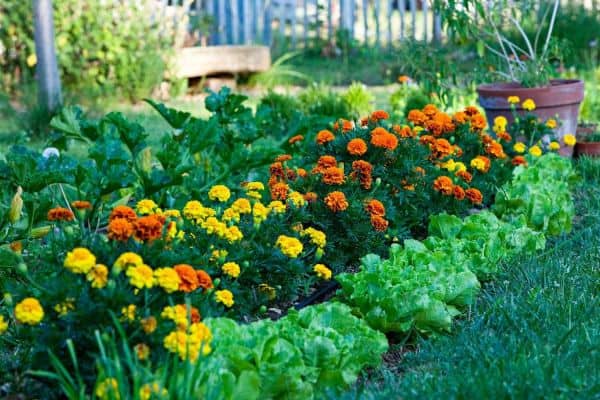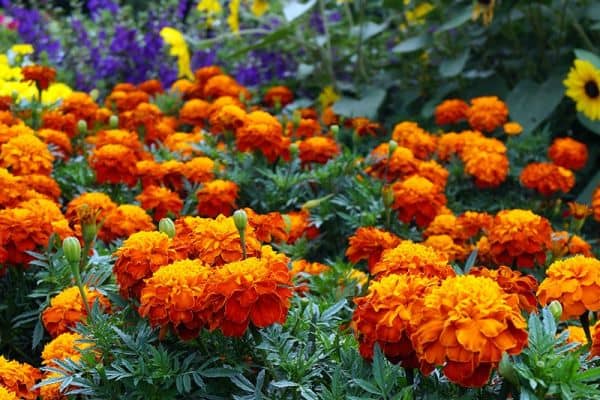Marigolds a fast-growing plants that can germinate in five to ten days and then they will start growing as they are pretty fast-growing flowering plants that can start blooming in about eight weeks.
They can get great for both outdoor and indoor plants as in most houses and gardens they are also used as edge plants in garden beds and borders, added to container arrangements, and planted in raised beds and vegetable gardens. So here is how you can grow marigolds from seed and the tips for indoor and direct sowing:
Where to Plant Marigolds?
Marigolds are flowering plants used often to edge plants in garden beds and borders, added to container arrangements, and planted in raised beds and vegetable gardens. They also require full sun and reasonably fertile soil with well-drained soil to grow well. Marigolds are also known for attracting several pollinators, like bees and butterflies, to the vegetable garden.

Why Grow Marigolds from Seed?
Growing marigolds from seed is super easy as you also don’t have to spend maybe about three dollars on just one small plant as you can buy a packet of seeds at the same price. They also have good germination rates from seeds as they are also long which makes them easier to handle.
When you grow marigolds from seed you also don’t have to rely on the varieties the garden center has to offer.

Growing Marigolds From Seed Indoors
As we talked about before growing marigolds from seeds is as easy as it is to grow indoors. For indoors you need to sow the seeds before the last frost date about four to six weeks before.
You need to fill a pot or a seedling tray with lightly moistened seed starting mix and press the seeds about half a centimeter or about a quarter of an inch into the soil. Then you can place the pot or a seedling tray under a grow light or sunny window and use a mister or spray bottle to water the pot or a seedling tray. While watering remember to avoid over-watering young marigold seedlings as they are prone to damping off and cause fungus or mold that can develop in overly wet conditions or even kill the plant. Also, remember to. keep space between seeds so they can circulate air between seedlings.

Hardening Off and Planting Marigold Seedlings
After you plant a marigold plant indoors then hardening off is an important step as it helps or allows plants to gradually acclimatize to the spring air after being in the house.
You can start hardening off the marigold plants by placing your seedling tray outdoors in a shady spot and bringing them indoors at night. Remember that you have to keep them in the shade for about three or four days before you can start introducing them to gradual amounts of sunshine.
After they are matured and are introduced to sunshine then you can plant marigolds in the garden where they can get full sun and have well-draining soil. Remember while you plant marigolds in the garden you have to dig a hole the size of a seedling root ball then fill in the hole around your plant with soil and water the base of the plant.
Remember to keep space between marigolds enough for the airflow and you can also add a layer of mulch around plants to keep the weeds down.

Using Marigolds as Companion Plants
Not only for the garden beds and borders or because of the flowers you can also plant marigolds as a companion plant for other plants and vegetables. They are mostly used in vegetable gardens as it is known to repel nematodes in the soil and not only nematodes marigolds are also planted as they are known to repel deer, rabbits, squirrels, and other four-legged pests.
They are known for not only repelling unwanted bugs but also attracting a lot of beneficial insects and valuable pollinators in your garden as they will help the plants. They are also known to be planted around cole crops and cabbage root maggot flies to get rid of onion flies eggs.

Growing Marigolds from Seed by Direct Sowing
So what is direct Sowing? Direct Sowing means to use the seeds directly in the garden before you grow them indoors. As for marigolds it can be done but remember not to sow seeds during the cold or frost season you. can sow it after the last frost date, around the same time you plant your warm-weather veggies, like tomatoes, melons, and peppers. You can sow marigold seeds in an area that gets full sun and has well-draining soil and they hate moisture.
After you sow marigold seeds they will germinate in five to ten days and then they will start growing as they are pretty fast-growing flowering plants that can start blooming in about eight weeks. You can also use the shallow furrow method to grow them and place the seeds as on the package directions distance and lightly cover the seeds with soil. You can also press the seeds about half a centimeter or about a quarter of an inch into the soil and water them lightly until the seeds get well established.
Even if the weather gets sudden frost or cold remember to cover your plants with a cloche, even a light bedsheet, or floating row cover and it will be fine.

Caring for Marigold Plants
To care for marigolds you need to deadhead the flowers as it will encourage the plants so they can bloom more flowers throughout the season. Still, deadhead is not necessary but it also helps plants to get and keep a fresh look, especially for those big blooms that will start to soggy petals and drop rotting as they decompose.
Remember that you should also avoid issues like root rot and mold as you can ensure it by planting the plant in well-draining soil. Also if you have planted a taller variety of marigolds remember to stake your plant’s time to tile as strong winds can blow the stems over.
FAQ
Q. How long does it take to grow marigolds from seed?
Marigolds sprouts within a few days of termination and they can bloom within 8 weeks making them easy to grow from seed.
Q. What is the fastest way to germinate marigold seeds?
The fastest way to germinate marigold seeds is by covering the seeds with only a very thin layer of soil, not thicker than 1/16 inch.
Q. Can you directly sow marigold seeds?
Yes, you can directly sow marigold seeds in the garden or on the tray.
Also Read: What is Borax? Know its amazing benefits to use around your houses
